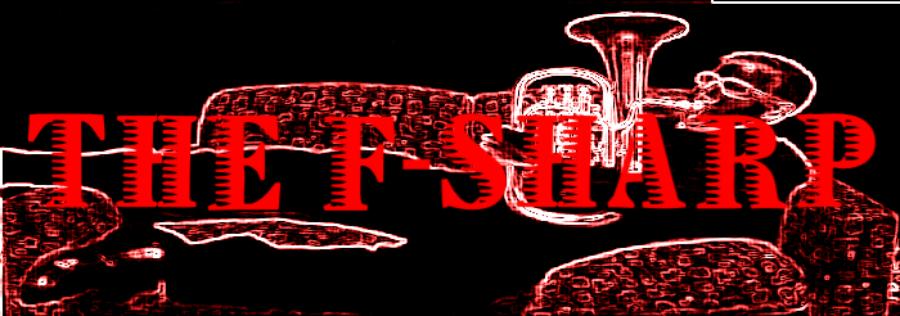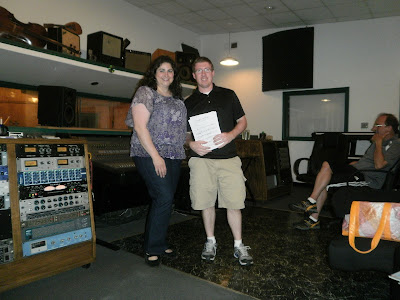Here's a little snipit from my paper.....
The powerful climax raises a very important question.
Why does Eb
become the tonal centricity and how is it related to the original tonal center
of A? Well, it’s very simple. It has already been determined that Bartók was
heavily dependent on symmetry in his music. Eb happens to be a tritone apart from A, and is
the exact halfway point between the octave. The diagram below illustrates how
each tonal reference point of the subject progresses into the climactic
half-way point, and then returns to the original tonal center of A.
Example 6. Tonal
Axis Diagram of Bartok’s Music for
Strings, Percussion, and Celesta
In this diagram, it is noticeable that each
succeeding interval is an exact mirror image of its counterpart. For example:
In the top voice the A moves to the Bb while in the bottom voice it moves to the G#,
both of which possess an interval of a half step. Then, the top voice moves to
the C#, an augmented 2nd up from the Bb, and the bottom voice also shifts an augmented
2nd down to the F. This of course continues till the end of the
movement when the original tonal center of A has returned, thus concluding an
amazing display of tonal centricity.
Not exactly a world-class work, but I'll take it considering how crazy this semester has been. Bartok is not necessarily the easiest composer to analyze either. But if you relate everything to mathematical formulas and symmetry, you are bound to run into some interesting perspectives on his music.
I am happy to say that on April 27, 2012 the clarinetist, Carrie Ravenscraft, and I met up at TNT studios and recorded my solo clarinet sonata 'Perceptions of Strife'. What a spectacular ride it has been with this piece. Carrie gave a stunning performance of the piece on April 16 at the new music festival, and that recording has already been sent to several professors at various music schools including Eastern Illinois State and Kansas State. Now that we are making this recording, we can start thinking about getting the piece published.
I will say as someone who loves writing large scores with lots of instruments, I never could have predicted the potential success I could have writing a piece for ONE instrumental voice.
I will say as someone who loves writing large scores with lots of instruments, I never could have predicted the potential success I could have writing a piece for ONE instrumental voice.
The studio was nice. Tim Haertel, the main sound engineering professor at IU Southeast, graciously let us use his studio to do the recordings. We had help from Niko Kanstanis, and Josh (I can not remember his last name) on the actual recording. But for the most part it was up to me and Carrie on which takes we wanted to redo, and how we want the recording to sound.
It wasn't easy, and at times there was a little tension do the lack of clear communication between Carrie and I, but the end product will really be awesome. And this was only a two hour recording session. Carrie and I might have had to take out restraining orders against eachother if we were there for more than 6 hours!
All joking aside, 'Perceptions of Strife' is becoming a great success but it wouldn't have without Carrie's outstanding musical interpretation. She has brought the piece alive, and that means more to me than anyone could know. And the important thing is, we will finish the project! I have already begun the editing process, which is basically me listening to each take over and over and deciding which one I like best. Then that has to be sent off to Tim, and he will piece everything together for the final product.
All in all, it was a pretty large step for me as a composer. Having my first piece recorded in a studio is definitely a new experience. Tim was very friendly and helpful and he also had a couple of engineering students who assisted with the project as well.
I also have to send a quick shoutout to Tim Miller, who set the whole thing up but more importantly worked with me on 'Perceptions of Strife', and pulled at my 20th century strings to create what I am considering my best work yet!
-PJF
I also have to send a quick shoutout to Tim Miller, who set the whole thing up but more importantly worked with me on 'Perceptions of Strife', and pulled at my 20th century strings to create what I am considering my best work yet!
-PJF







No comments:
Post a Comment